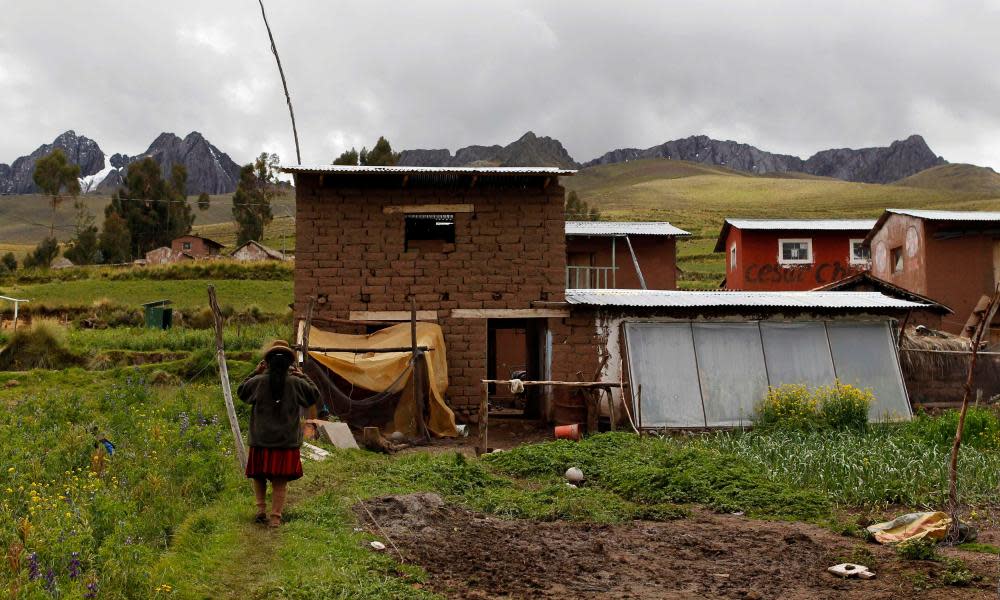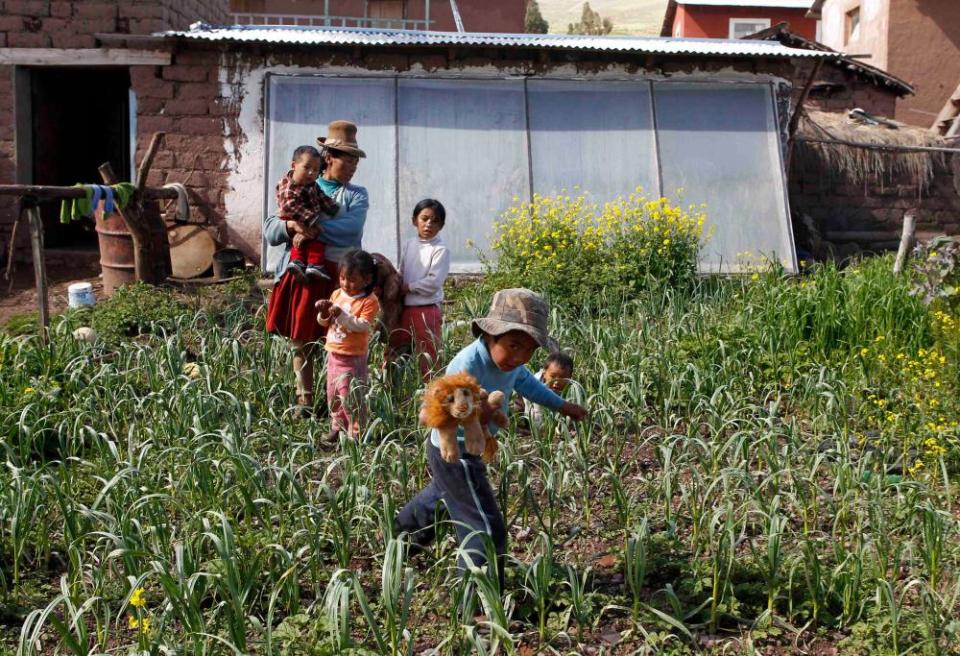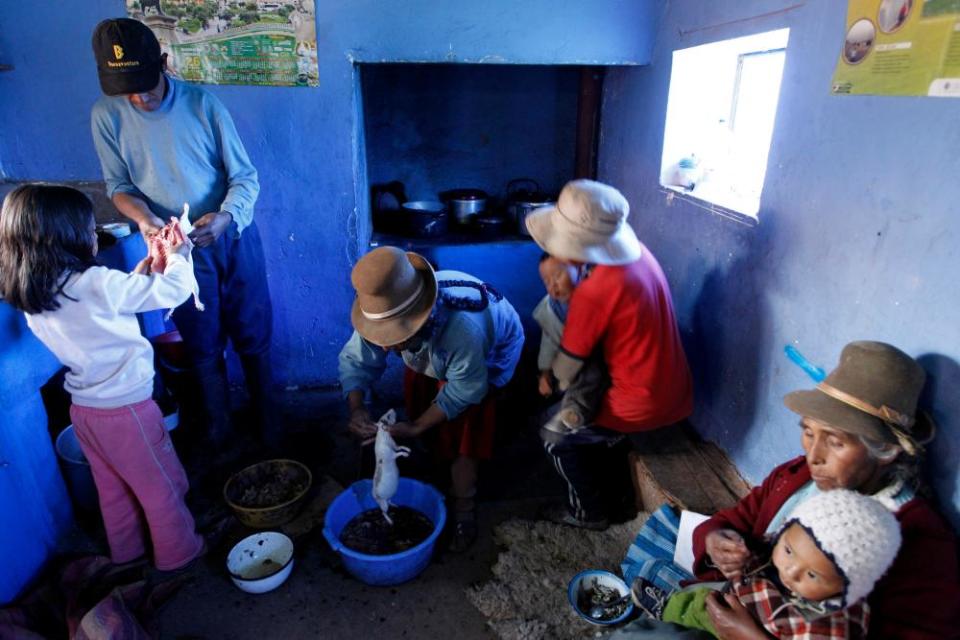'Now we sleep peacefully': life in Peru transformed by warm houses

On a windswept plain more than 4km above sea level, families gather; a throng of colourful, intricately patterned hats, skirts and ponchos. They are gazing curiously at their revamped homes, which now glint in the sun.
Cladding the mud brick homes and absorbing the perpendicular rays of the sun are polycarbonate panels fitted at a slanted angle to the outer walls. In Hanchipacha, a poor village in the highlands of Cusco, in Peru’s southeastern Andes, these panels are a point of pride.
The panels trap the heat of the sun in an air pocket next to the walls, which have been painted black to better absorb it. During the day hot air rises and passes through tubes higher up on the wall and into the families’ bedrooms while the colder air passes out via tubes inserted lower down through convection.
The result – in this village where night time temperatures regularly drop below 0C – is a rise in the indoor temperature from just above freezing to up to 12C.

“We’ve always suffered from the cold,” says Martín Huamán, 50, whose one-storey home has been fitted with a Muro Trombe, as the panels are known in Peru.
Named after Félix Trombe, the French engineer who first designed the passive solar building, the panels have been adapted for the mountains of the southern hemisphere by engineers with the Rural Support Group at Lima’s Pontifical Catholic University.
“These changes make all the difference to our lives,” says Huamán, holding his two-year-old daughter by the hand. “Now we can sleep peacefully all night long because, at this altitude, it’s very cold.”
Together with an insulated roof and wooden flooring, Huamán’s family now live in a centrally heated home – powered by the sun. All they have to remember is to cover the tubes at night to prevent the warm air from escaping, and to open them during the day.
Dina Follana, the village’s warm homes project manager, jokes that at first the families “had to throw off the clothes they used to sleep in”, because they were so unused to the warmth of their houses.
“In the first week they were suffocating but now they are getting used to it,” she says.
Global heating has lengthened and intensified the winter frost season from May to September. Whereas temperatures used to drop to -5C or -10C, now they can reach -15C or -20C, say the villagers.
“When I was a boy it wasn’t so cold, now it’s got colder,” says Huamán who has lived all his life in Hanchipapa. “From what I’ve heard it’s because the climate is changing a lot.”
In Peru, the poorest people, indigenous Quechua speakers, often live at the highest altitudes. Above the tree line, the only vegetables that grow are potatoes, which along with llamas, alpacas and a few hardy sheep, supplement a meagre diet.
Despite a dramatic reduction of infant malnutrition at a national level, it remains an endemic problem in high Andean communities along with anaemia, which continues to affect four in 10 under-fives in the country.

Over the past three years, Peru’s development ministry has installed 7,436 thermal homes in 13 regions across the southern Andes at an average cost of 10,900 Peruvian soles (£2,431) each, according to official figures.
“We focused on homes where there are children principally to protect them from pneumonia and other respiratory infections,” Patricia Balbuena, Peru’s vice-minister for development, told the Guardian. In these remote areas, pneumonia can be fatal for the old and very young particularly if they are malnourished or anaemic.
Initial health statistics indicate respiratory illnesses have been reduced by 20-30% using the simple technology, says Jorge Soria, head of the Warm Houses project at the university.
Using local materials the local people help adapt their homes. “We’re making this technology fit in with the idiosyncrasy of our Andean culture,” says Urphy Vásquez, an investigator with Inte, the university’s natural sciences and renewable energy institute. “If we don’t do so then the rural dweller won’t take advantage of it.”


